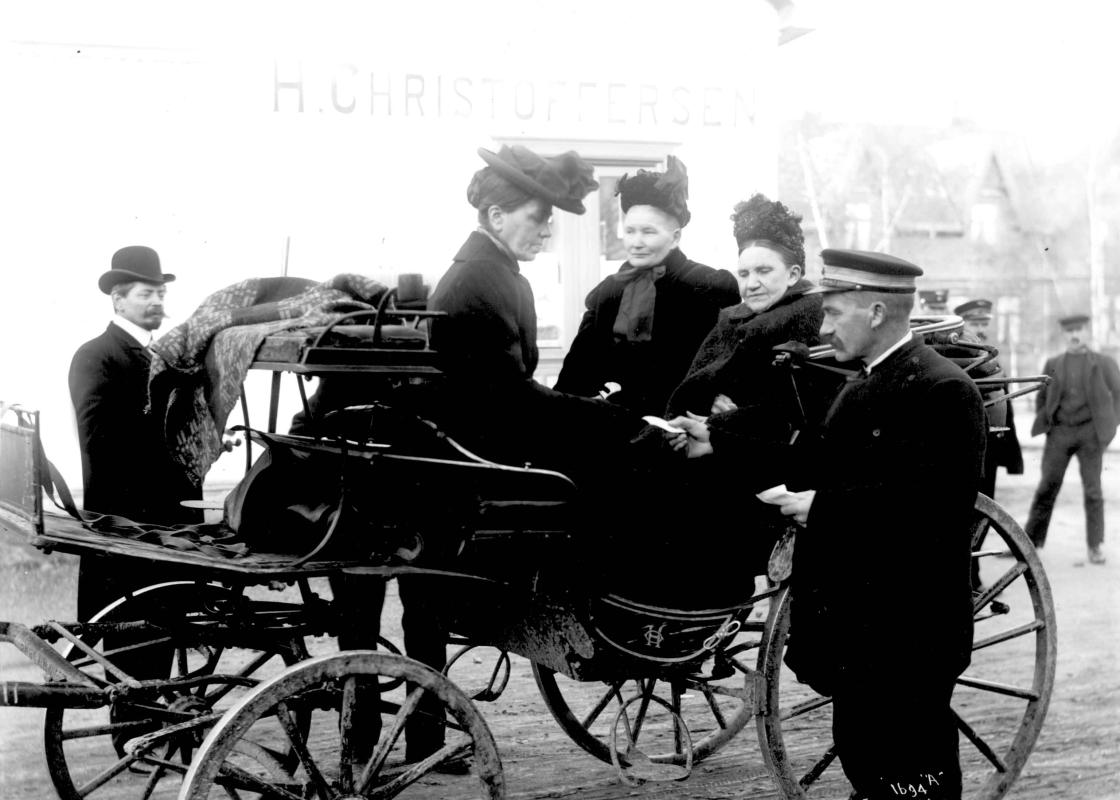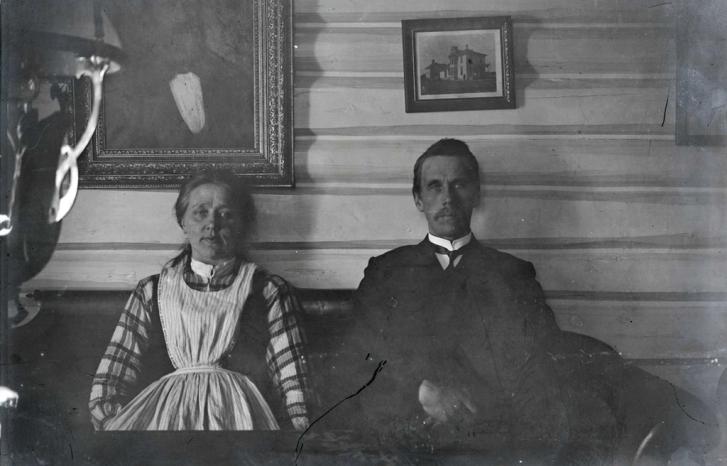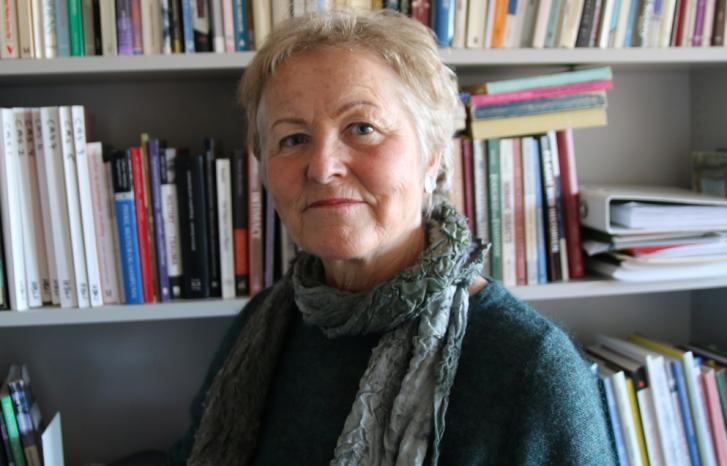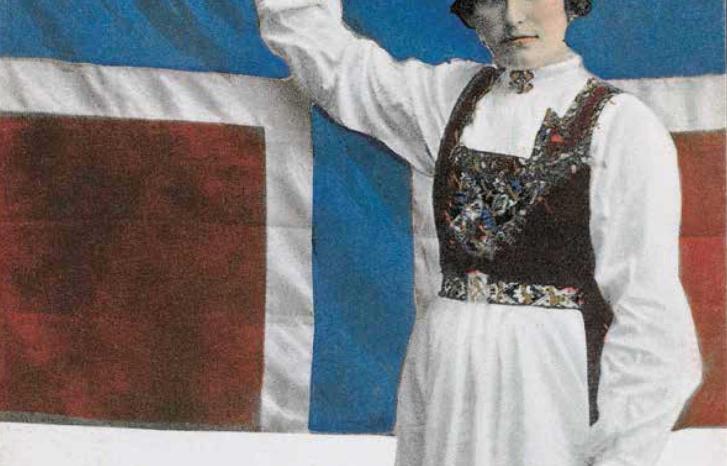The exhibition, which celebrates the centennial anniversary of women’s suffrage in Norway, can be seen at Norsk Folkemuseum. It is called Finstemte kvinnfolk (“Devoted Women”) and will be on display until 30. December 2014. It exhibits various aspects of the everyday life of women of all social classes during the last 200 years. Furthermore, it focuses on the societal, political and judicial changes which have affected Norwegian women in the same period.
“When the Norwegian constitution was written in 1814, class distinctions were greater than the division between gender in terms of suffrage”, says curator Thomas Walle, who is the project manager of the exhibition.
He emphasises the importance of examining social and gendered differences simultaneously in order to understand the historical development of democratic rights for women.
“In this exhibition we try to show that the differences did not only revolve around gender, but that there were huge distinctions between people of different status and social classes. The majority of men did not have the right to vote in 1814, it was reserved for the upper classes and men of certain professions. Only 7% of the population was entitled to vote. For most women, the lack of suffrage had as much to do with their social position ― which followed that of their husband — as with gender”, claims Walle.
Suffrage came gradually

“General suffrage for men was introduced in 1898. It is only after this that the question of suffrage for women became a common concern for women in general and not only for women of a certain standing.”
Suffrage for women was gradually introduced in Norway. In 1901, the right to vote at local government elections was given to a limited amount of women based on their income. In the same year, the marriage vow concerning the woman’s subservience towards her husband was removed from the marriage ritual.
“Then, in 1907 women who paid a minimum tax amount were allowed to vote at general elections. But this applied only to a small group of women. Norway was the first independent state which abolished this democratic injustice towards women when universal suffrage was introduced in 1913”, says Walle.
Wealthy women’s struggle
He emphasises that there were significant class distinctions in the struggle for suffrage.
“To begin with, a majority of the women who were involved in the suffrage movement belonged to the higher classes in society.”
But although women of high social standing had other resources and opportunities, they were in many ways subjected to strict social regulations which did not apply to the less well off. Women from the lower classes were allowed to work and earn their own money, whereas the wealthy were refused the right to make their own living. They were also to a much larger degree subjected to strict codes of behaviour.
Daring love tokens
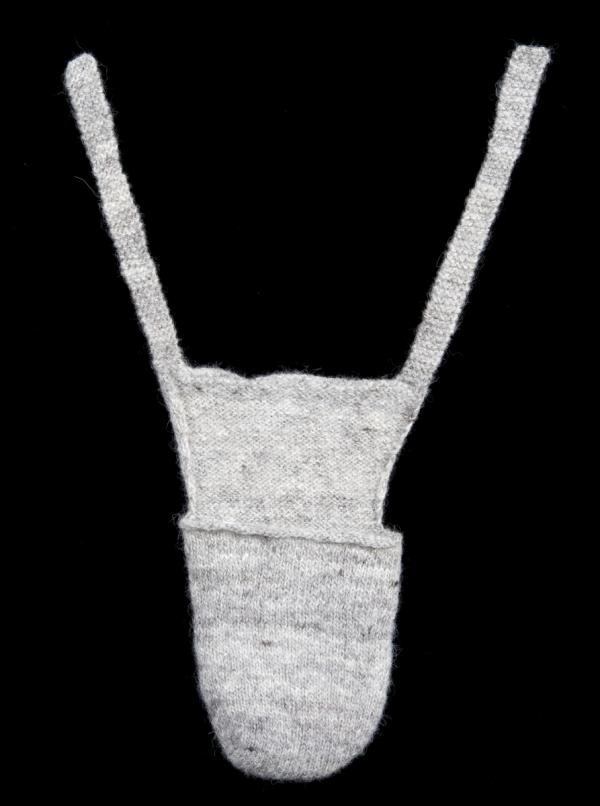
There were, for instance, class related codes deciding how it was acceptable for women to flirt or show interest in a man. In rural areas it was accepted that both men and women showed interest by giving each other self-made love tokens. These tokens were also meant to prove the giver’s handicraft skills. If the token was accepted, it indicated that the love was requited.
“The most daring love token a girl could present to a boy was a knitted codpiece”, says Walle. By accepting such a gift, the boy would show that his intentions were serious.
Bourgeoisie women, however, were not permitted to show romantic feelings for a man. Although they might flirt discreetly by use of eye contact or by signalling with their handkerchiefs, they could not show any feelings for a man until he had first declared his love for her. The women from the upper classes had to be chosen. Once chosen, they could either accept or reject the suitor, but they were not permitted to make the first step.
For these women life revolved around getting married to an acceptable man, as described in Camilla Collett’s famous novel The District Governor’s Daughters which was published in 1854-55. Collett, too, belonged to the upper classes, as most of her fellow feminists of the time.
Suffrage today
Walle emphasises that the exhibition not only displays the historical development of women’s suffrage. Another intention has been to draw parallels to current societal issues.
“There are still restrictions regarding participation at Norwegian elections. We do no longer distinguish between men and women in this matter, but we distinguish between different groups in society. Those affected by these restrictions today are ethnical groups and those under the age of majority”, says Walle.
One example is the on-going debate concerning whether or not the age restriction to participate at elections should be reduced from 18 to 16.
“In terms of ethnical restrictions, people who have lived in Norway more than three years and have residence permit are allowed to vote at local elections. However, in order to vote at general elections, you have to hold full Norwegian citizenship. Thus there are people who live in Norway for years or even most of their lives without full democratic rights. This is also an issue which deserves attention,” concludes Walle.
Translated by Cathinka Hambro.
Finstemte kvinnfolk ("Devoted women") marks the centennial anniversary of women's suffrage in Norway. It can be seen at Norsk Folkemuseum and will be on display until 30. December 2014. It exhibits various aspects of the everyday life of women of all social classes during the last 200 years.
Normal 0 21 false false false NO-BOK X-NONE X-NONE /* Style Definitions */ table.MsoNormalTable {mso-style-name:"Vanlig tabell"; mso-tstyle-rowband-size:0; mso-tstyle-colband-size:0; mso-style-noshow:yes; mso-style-priority:99; mso-style-parent:""; mso-padding-alt:0cm 5.4pt 0cm 5.4pt; mso-para-margin-top:0cm; mso-para-margin-right:0cm; mso-para-margin-bottom:10.0pt; mso-para-margin-left:0cm; line-height:115%; mso-pagination:widow-orphan; font-size:11.0pt; font-family:"Calibri","sans-serif"; mso-ascii-font-family:Calibri; mso-ascii-theme-font:minor-latin; mso-hansi-font-family:Calibri; mso-hansi-theme-font:minor-latin; mso-fareast-language:EN-US;}
Thomas Walle is social anthropologist and curator at Norsk Folkemuseum.
In 2011 he defended his PhD thesis A Passion for Cricket: Masculinity, ehtnicity, and diasporic spaces in Oslo at the Faculty of Social Sciences, University of Oslo.
